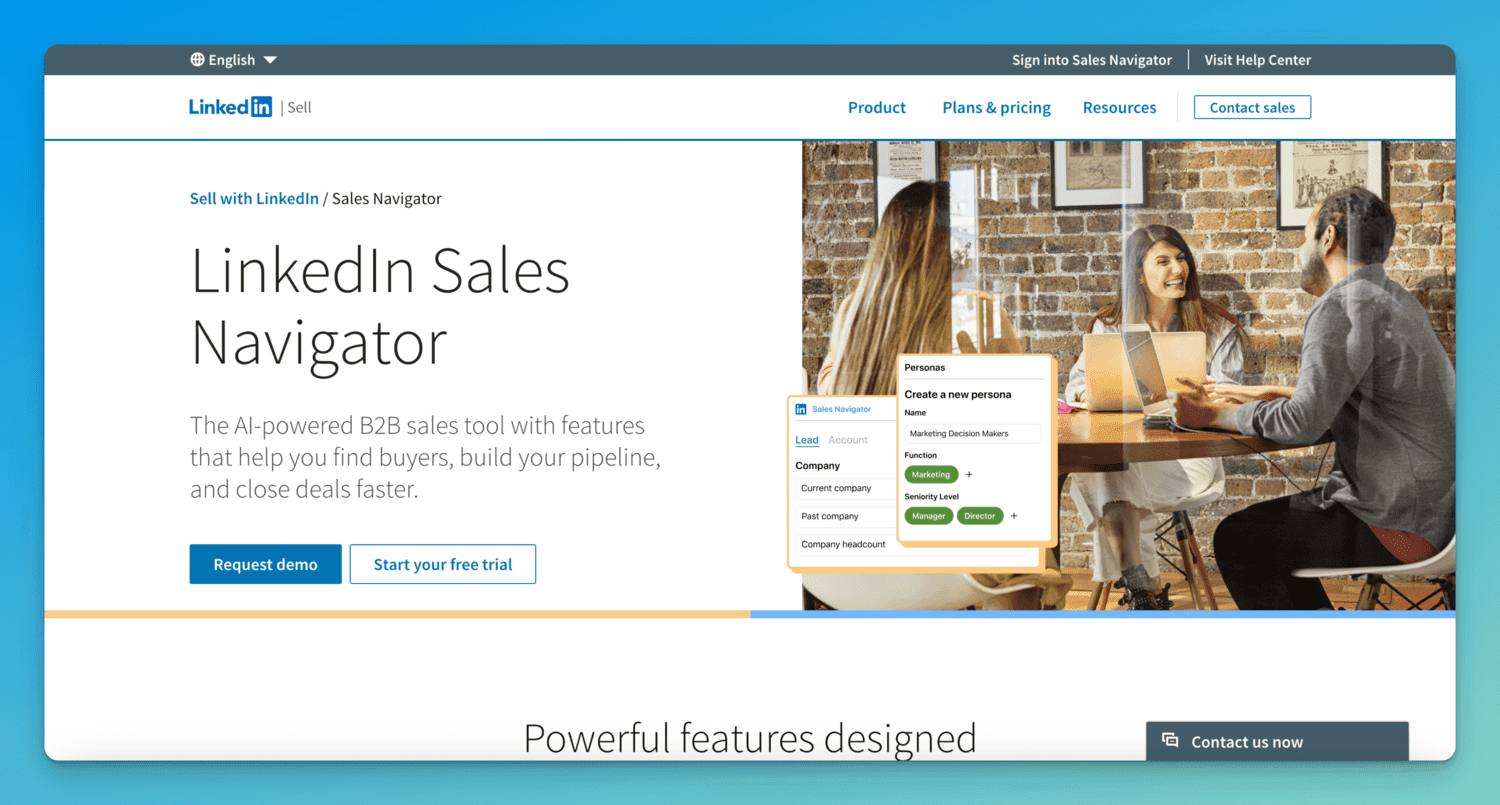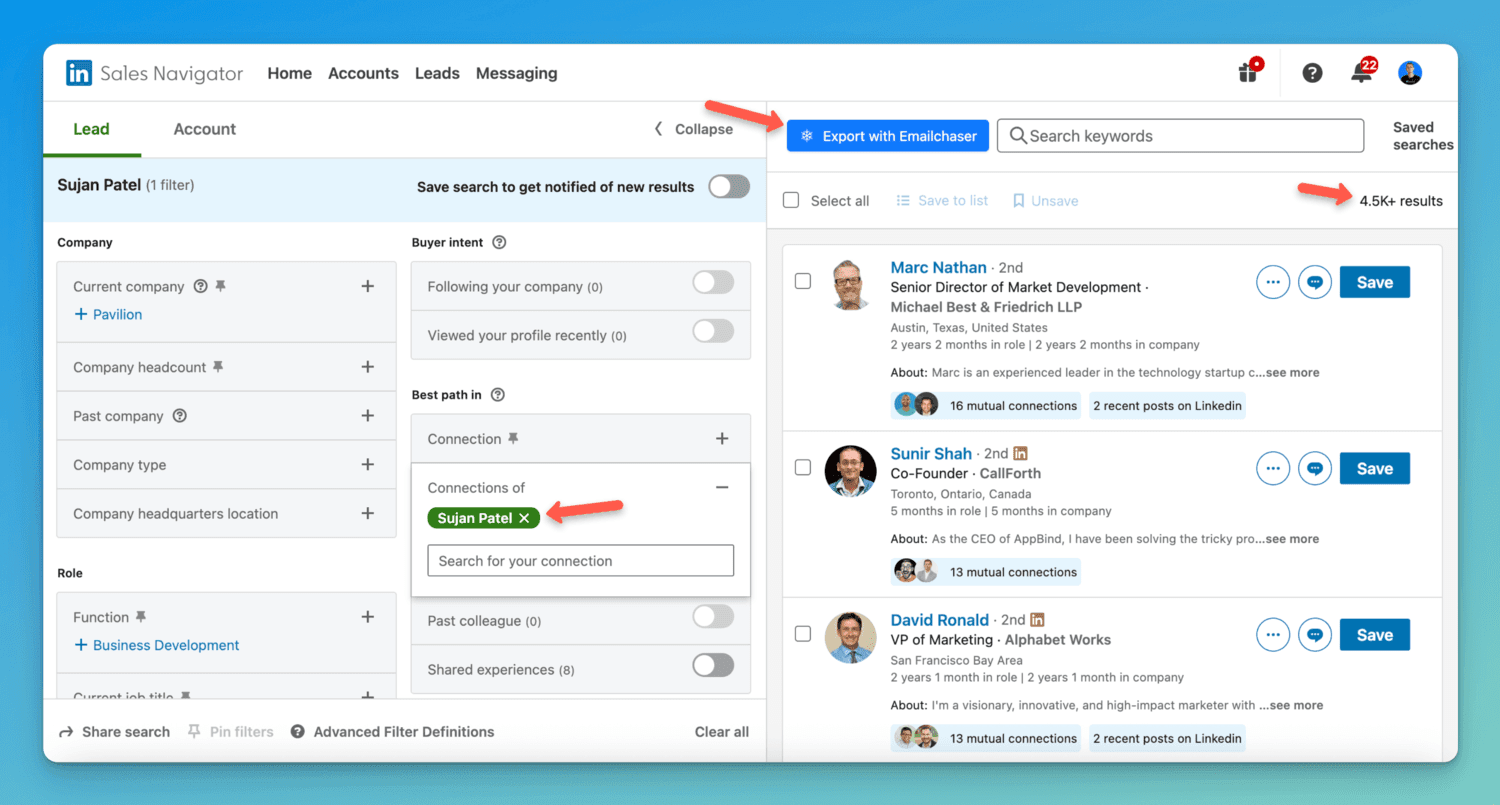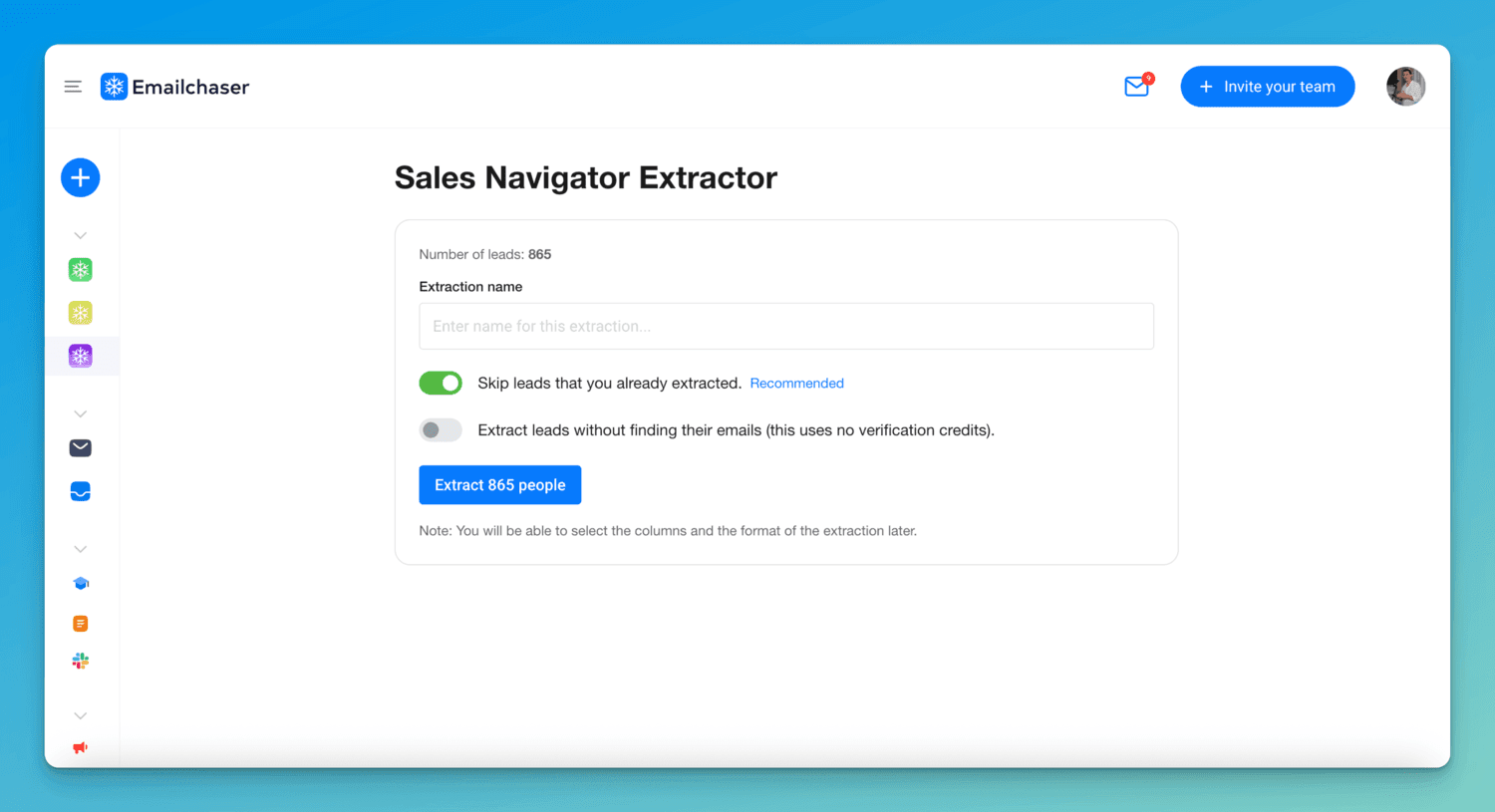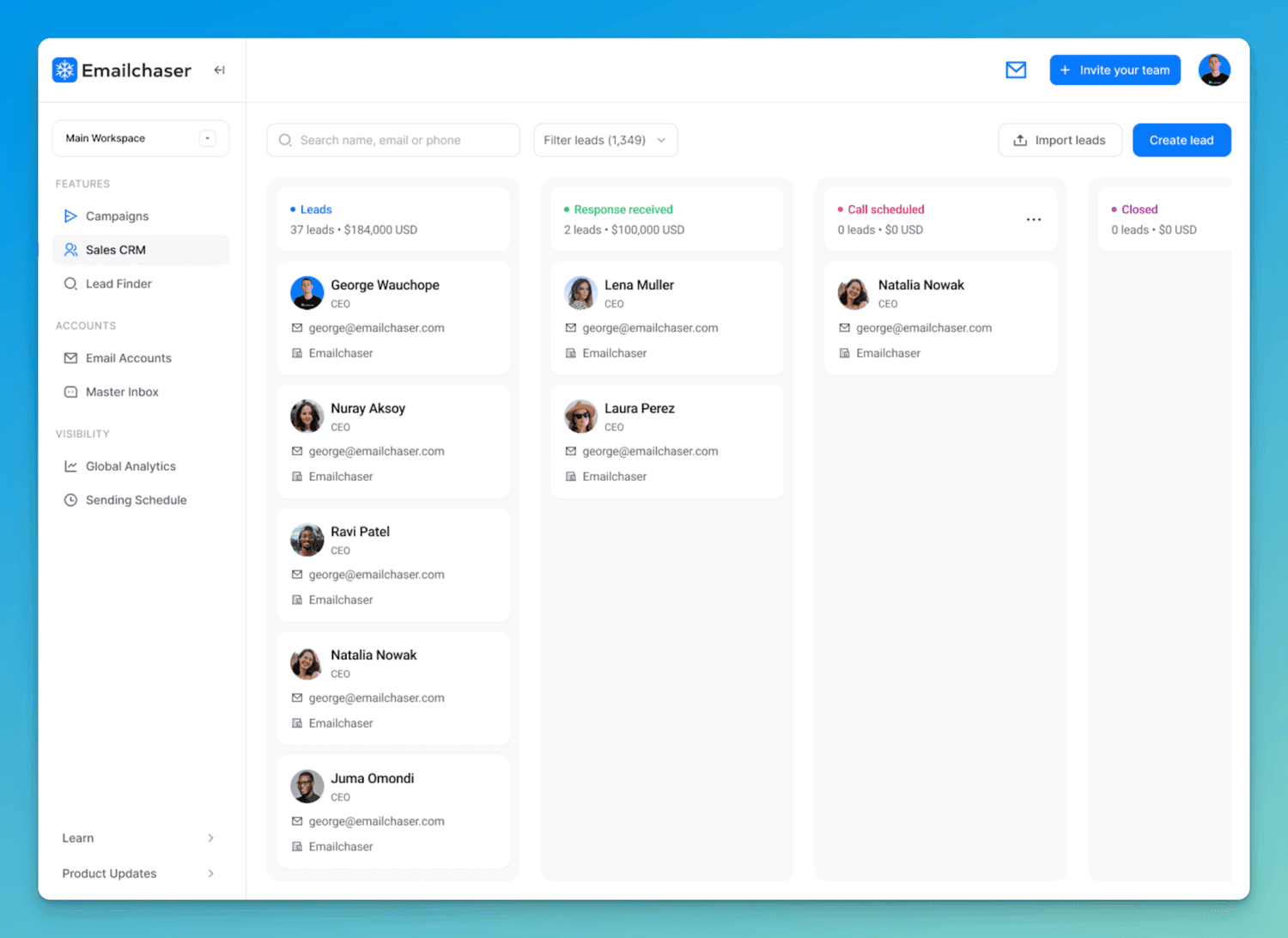How To Build A Lead List For Cold Email (2025)
Updated December 2025
In this article, I'll show you how to build a B2B lead list for cold email.
The best part is that you can automate this so that you don't need to manually search for each lead.
Below is my four step process:
1. Identify your ideal customer profile (ICP)
2. Extract your ICP from LinkedIn Sales Navigator
3. Upload leads to a campaign
4. Profit
Pro Tip: Do not buy pre-existing lead lists. There are companies that sell lead lists, but these lists are outdated, not relevant and contain “spam traps” which will cause your emails to go to spam.
1. Identify your ideal customer profile (ICP)
In sales, the term “Ideal Customer Profile” (ICP) refers to a hypothetical customer type that would most benefit from your product or service.
For example, the ICP for Emailchaser is someone who already uses cold email software.
If I'm trying to get new customers for Emailchaser, then contacting random business owners will not work, since most people don’t even know what cold email software is.
But if I build a list of people that already use cold email software, then they are 10x more likely to respond to my emails, since they are already in the market for what I’m selling.
2. Extract your ICP from LinkedIn Sales Navigator
The next step is to search for leads that match your ICP on LinkedIn Sales Navigator.

LinkedIn Sales Navigator is the best place to find B2B leads since LinkedIn is the only platform that owns the data, meaning that it's the most accurate.
Continuing with the example mentioned above, if I am looking for people that already use cold email software, then I'll send LinkedIn connection requests to all of my competitors. Once they accept my connection requests, I can use the "Connections of" filter in Sales Navigator to extract all of their connections.

The founders/CEOs of cold email software companies will be connected to a lot of people that use cold email software (my ICP).
The problem is that LinkedIn Sales Navigator doesn't allow you to extract leads with their emails.
You need to use Emailchaser's "Lead Finder" Chrome extension to extract these leads with their emails.

3. Upload leads to a campaign
Now that you've extracted your leads from Sales Navigator, you can upload them to a campaign in Emailchaser.
Creating a campaign allows you to automatically send personalized cold emails to your leads.
You can either upload a .csv file, or add your leads to a Google spreadsheet, and then connect the Google spreadsheet to your campaign.

4. Profit
Now it's time to profit.
If you are contacting thousands of new leads each day, then you can expect dozens of opportunities daily.
I recommend that you use Emailchaser's built-in Sales CRM feature to manage all of the leads that respond to your campaigns.
When a lead responds, it will automatically appear in the Sales CRM page.

Final thoughts
I recommend that you follow my 4-step process when building your lead list:
- Identify your ideal customer profile (ICP)
- Extract your ICP from LinkedIn Sales Navigator
- Upload leads to a campaign
- Profit
Even if you have a great lead list, it won't matter if what you say doesn't get the attention of your prospects.
I recommend that you read my article How To Write A Cold Email to learn how to write an email that gets responses.
Article by
George Wauchope
Founder of Emailchaser.
I have been working in the sales & marketing industry for nearly a decade.
When I’m not working on my business, I enjoy eating sushi & doing jiu-jitsu.
About the author
Address: 151 Calle de San Francisco San Juan, Puerto Rico
Email: [email protected]
© Copyright 2025 Emailchaser